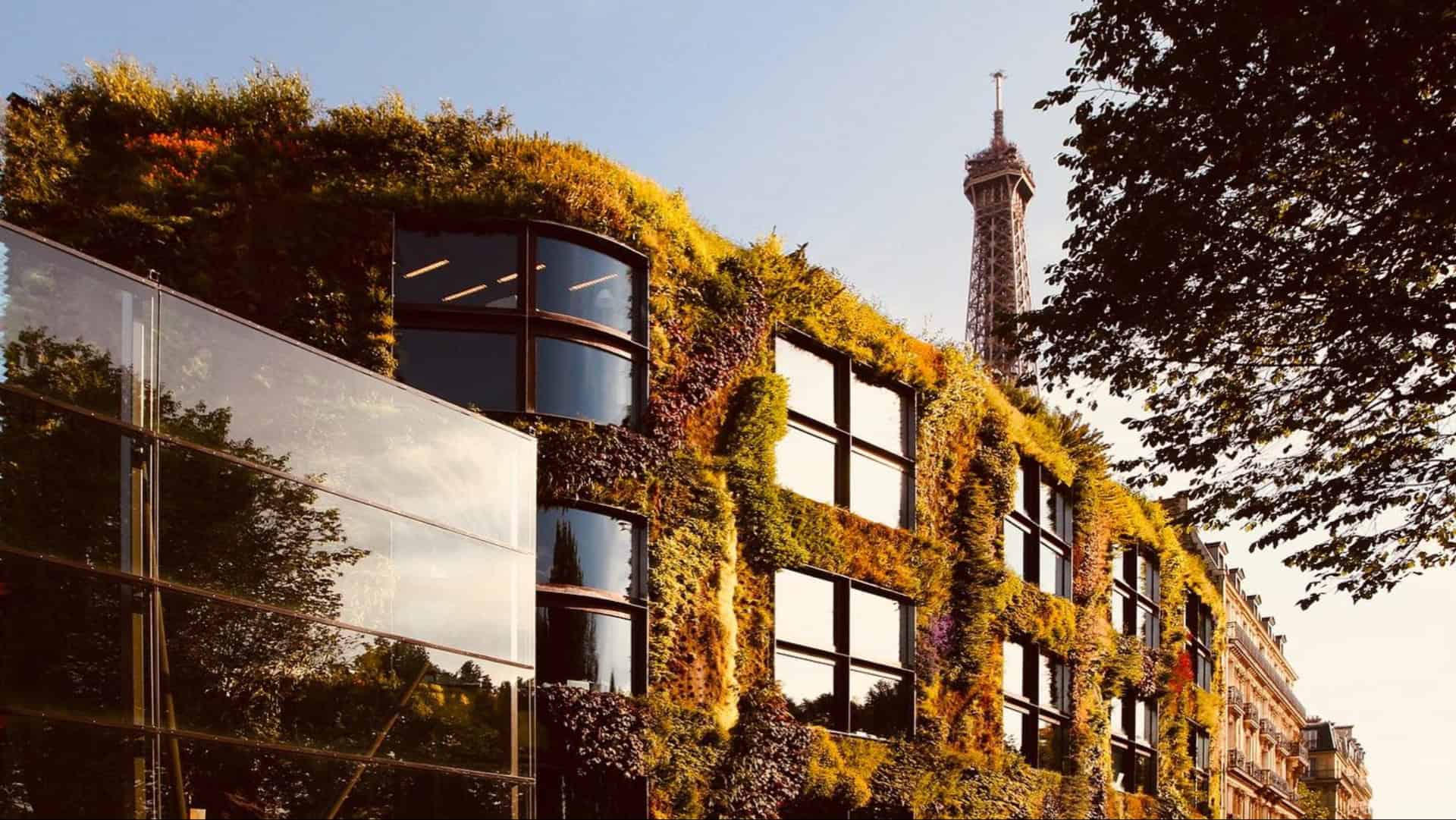In a world increasingly conscious of sustainability and aesthetics, green facades have emerged as a revolutionary architectural trend.
They not only enhance the visual appeal but also contribute to environmental wellness.
Here, we explore 10 stunning green facades that are sure to inspire and captivate.
1. Parkroyal Collection Pickering
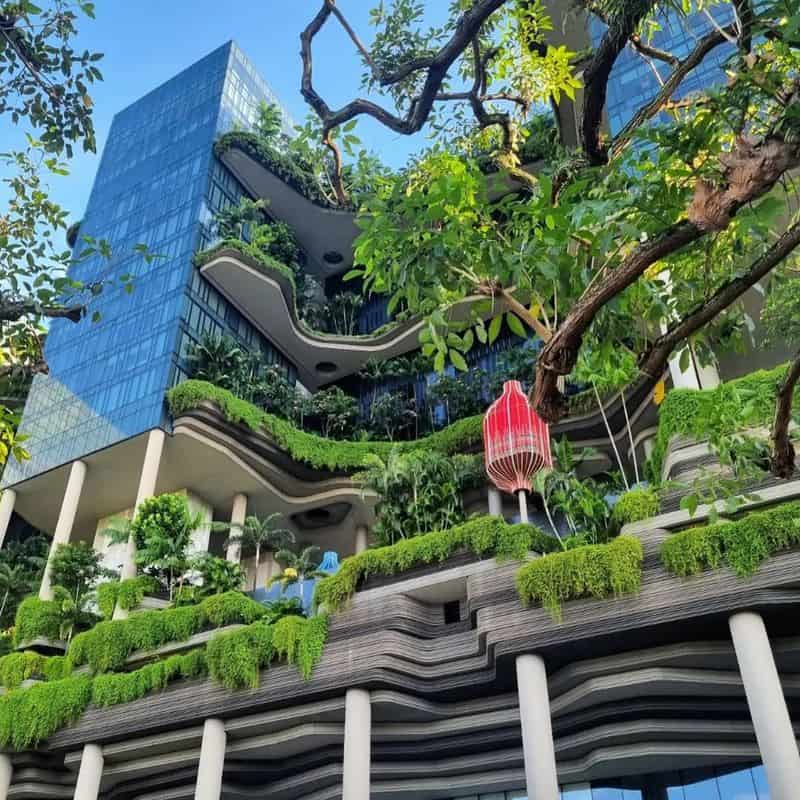
Located in Singapore, the Parkroyal Collection Pickering hotel is a masterpiece of biophilic design.
Its terraced gardens and lush green facades blend seamlessly with the city’s skyline. The cascading greenery provides shade and helps to cool the building naturally.
These verdant features not only enhance the visual appeal of the hotel but also promote biodiversity and improve air quality.
This innovative design highlights how urban architecture can harmonize with nature, offering a refreshing oasis in the bustling cityscape.
2. The Musée du Quai Branly

In Paris, the Musée du Quai Branly stands as a testament to artistic and ecological innovation.
Its living wall, designed by botanist Patrick Blanc, features a stunning array of plant species, creating a vibrant tapestry of green hues.
This green facade not only enhances the museum’s aesthetic appeal but also improves insulation and air quality.
The integration of nature into the urban landscape offers visitors a refreshing experience, merging the worlds of art and environmental consciousness seamlessly.
3. The Green Facade of The Edge
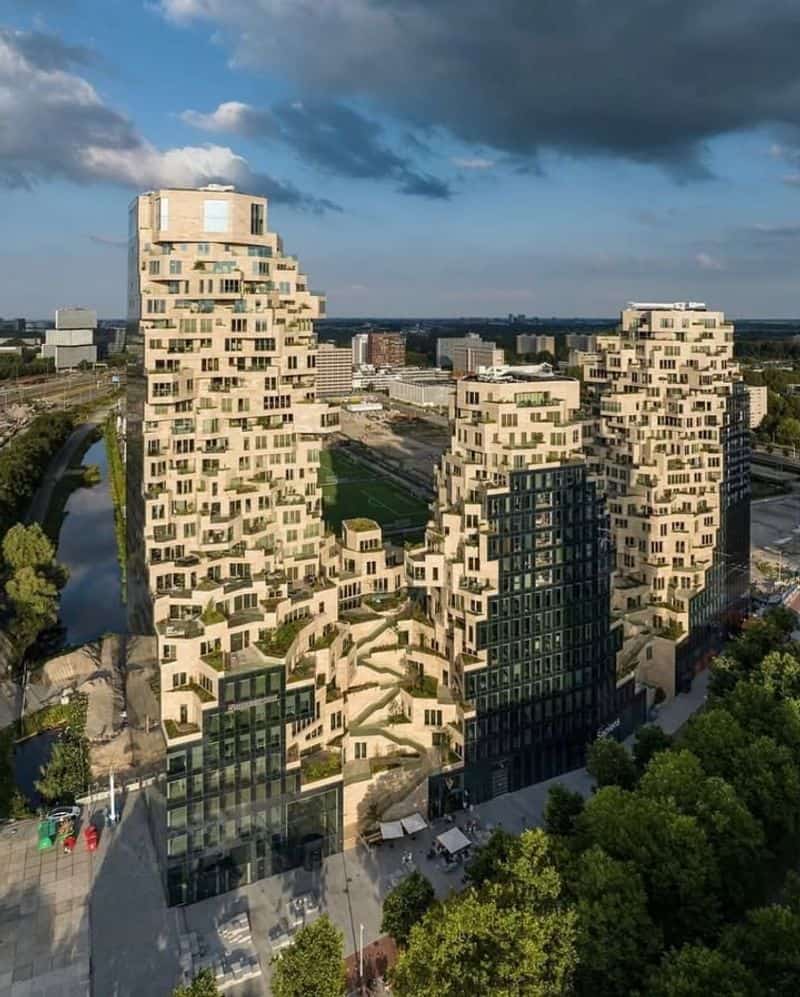
Based in Amsterdam, The Edge is renowned for its commitment to sustainability, highlighted by its green facade.
This office building incorporates living walls that significantly reduce energy consumption and enhance indoor air quality.
The greenery also offers a visually appealing exterior, creating a tranquil environment for workers. The
Edge sets a benchmark in sustainable design, proving that modern offices can combine ecological responsibility with contemporary aesthetics, fostering a healthier workplace.
4. The Elithis Tower

Situated in Dijon, France, the Elithis Tower is a beacon of sustainable architecture, famed for its eco-friendly design.
The building features green facades and solar panels, promoting energy efficiency. The plants act as natural insulators, reducing energy consumption.
The lush greenery provides an appealing visual element while improving air quality.
This combination of aesthetics and eco-conscious elements makes the Elithis Tower a landmark in sustainable urban design!
5. The ACROS Fukuoka Prefectural International Hall
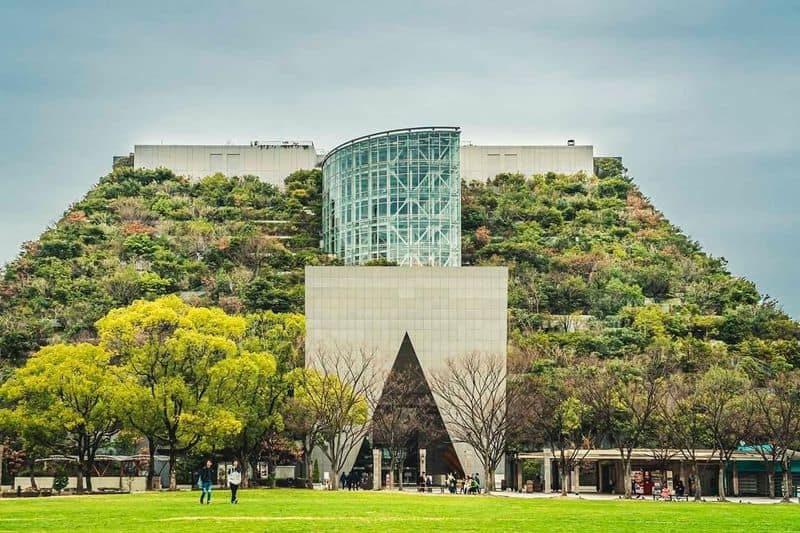
The ACROS Fukuoka in Japan is a striking example of architecture meeting nature.
Its terraced green facade, featuring thousands of plants, creates a living hill that contrasts beautifully with the urban setting.
This innovative building design not only provides a habitat for wildlife but also improves air quality and offers public spaces for relaxation.
By integrating green elements into its structure, ACROS Fukuoka demonstrates the potential of blending sustainability with urban life.
6. The Vertical Forest (Bosco Verticale)
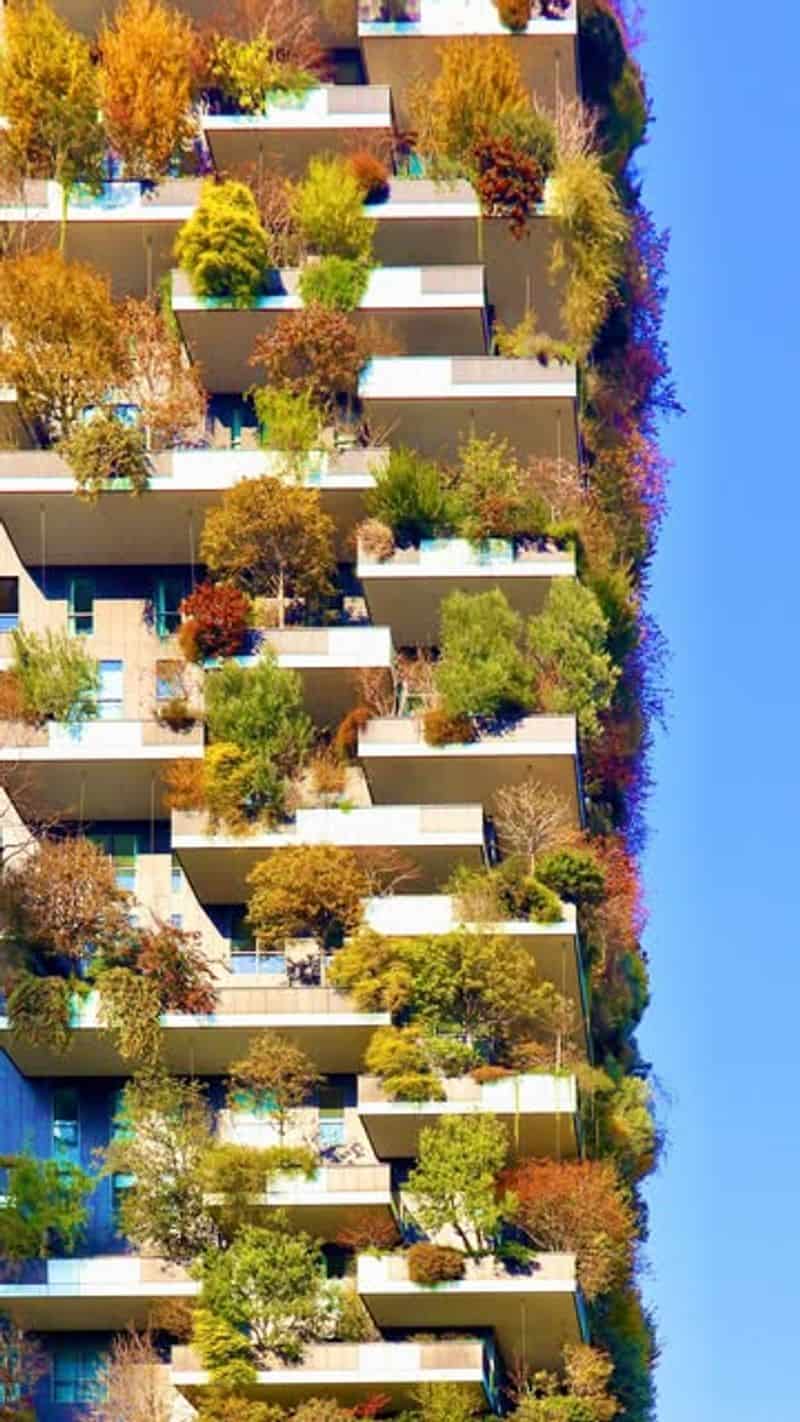
Located in Milan, Italy, the Bosco Verticale is a pioneering residential complex featuring two towers enveloped in lush greenery.
The diverse plant life includes over 900 trees and 5,000 shrubs in a symbiotic relationship with the buildings, promoting biodiversity.
The green facade offers a stunning contrast against the urban skyline.
The towers not only look beautiful but also create microclimates, filtering dust and pollutants.
This vibrant facade demonstrates how nature and architecture can coexist harmoniously while significantly enhancing urban living spaces.
7. The Green Wall at the University of Warsaw Library

The University of Warsaw Library in Poland features an impressive green wall that transforms its exterior into a living garden.
This vertical garden showcases a variety of plant species, creating a lush and dynamic facade.
By improving air quality and providing natural insulation, the green wall is both a functional and aesthetic feature.
It exemplifies how educational institutions can incorporate environmental sustainability into their infrastructure, inspiring students and visitors alike.
8. One Central Park
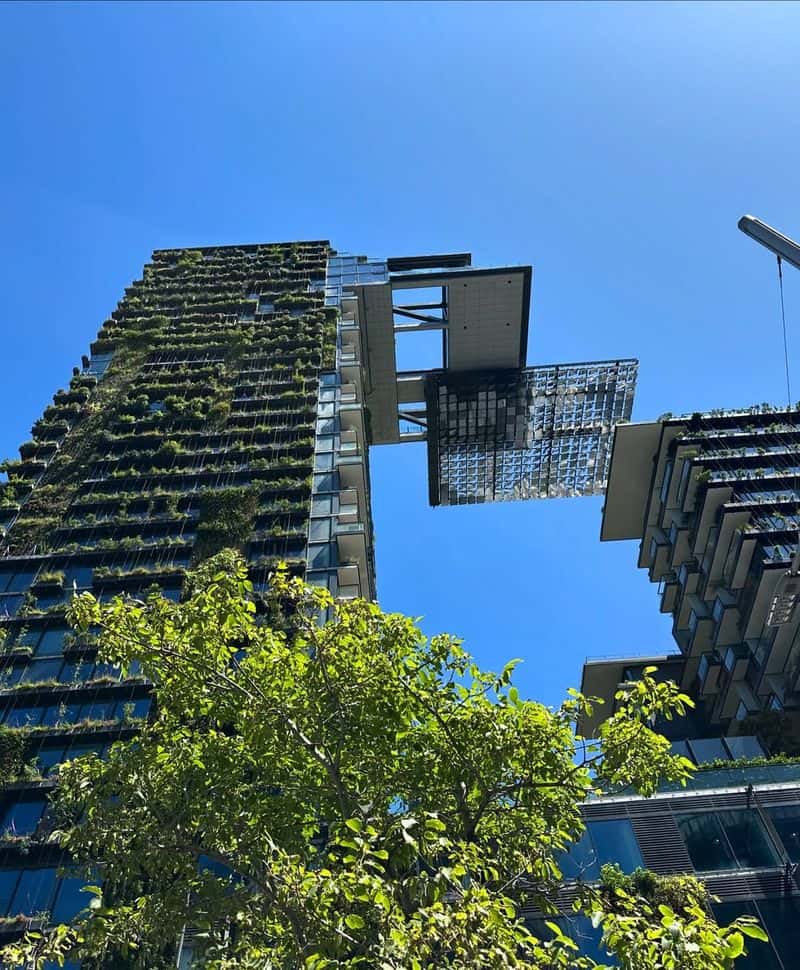
One Central Park in Sydney, Australia, boasts a mesmerizing facade covered with living plants.
The building incorporates vertical gardens designed by botanist Patrick Blanc, creating a lush, verdant surface that captivates onlookers.
The heliostat system reflects sunlight into shaded areas, enhancing natural light.
This green facade not only adds an aesthetic charm but also helps cool the building, improves air quality, and provides habitats for urban wildlife.
Its integration of technology and nature exemplifies innovative sustainable architecture at its finest.
9. CaixaForum Madrid
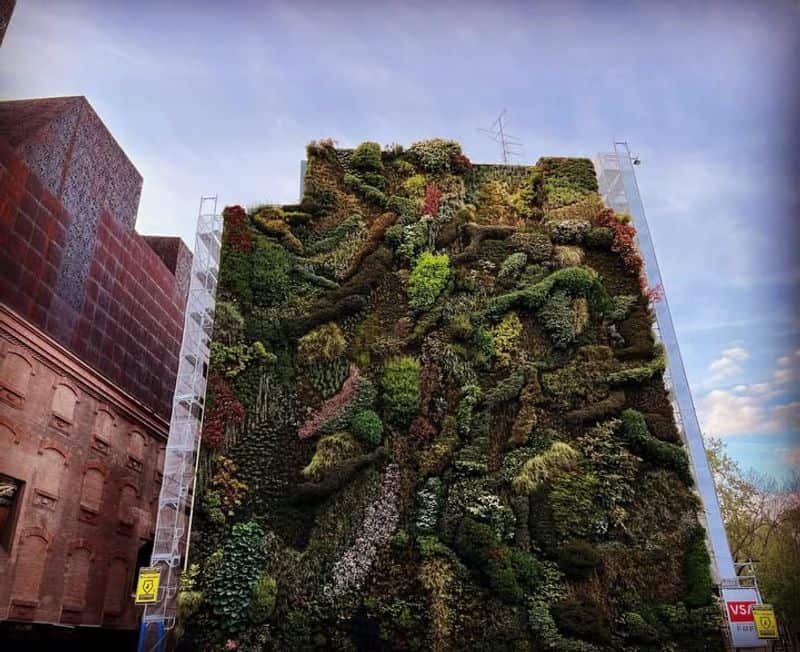
The CaixaForum in Madrid showcases a spectacular vertical garden that covers an entire wall of the cultural center.
This living tapestry, composed of over 15,000 plants of 250 different species, creates a dynamic facade that captures the essence of biodiversity.
The greenscape enhances the building’s insulation and reduces urban heat, while providing a striking visual contrast to the surrounding historic architecture.
This innovative use of greenery demonstrates how sustainable practices can be beautifully integrated into urban cultural spaces.
10. The Vertical Garden at the Athenaeum Hotel
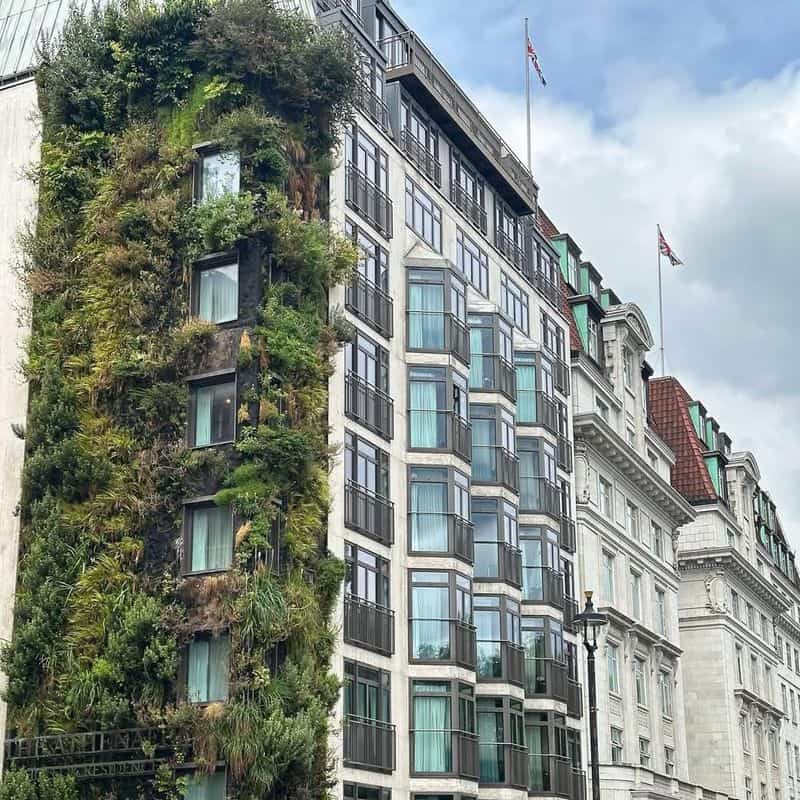
In London, the Athenaeum Hotel’s vertical garden is a stunning feature that transforms its urban facade into a vibrant green canvas.
This living wall incorporates a diverse range of plants, offering a refreshing burst of nature amidst the city’s hustle.
The green facade enhances the building’s insulation, reduces noise, and improves air quality.
This lush display is not only visually striking but also demonstrates how nature can be integrated into hospitality design, providing guests with a unique and serene experience.

